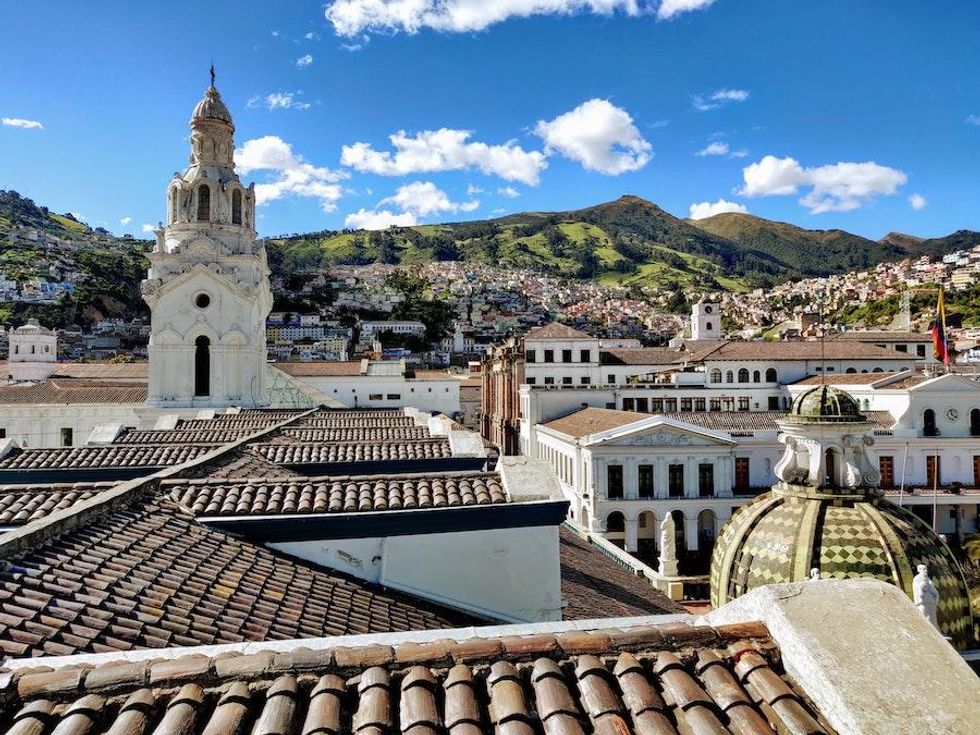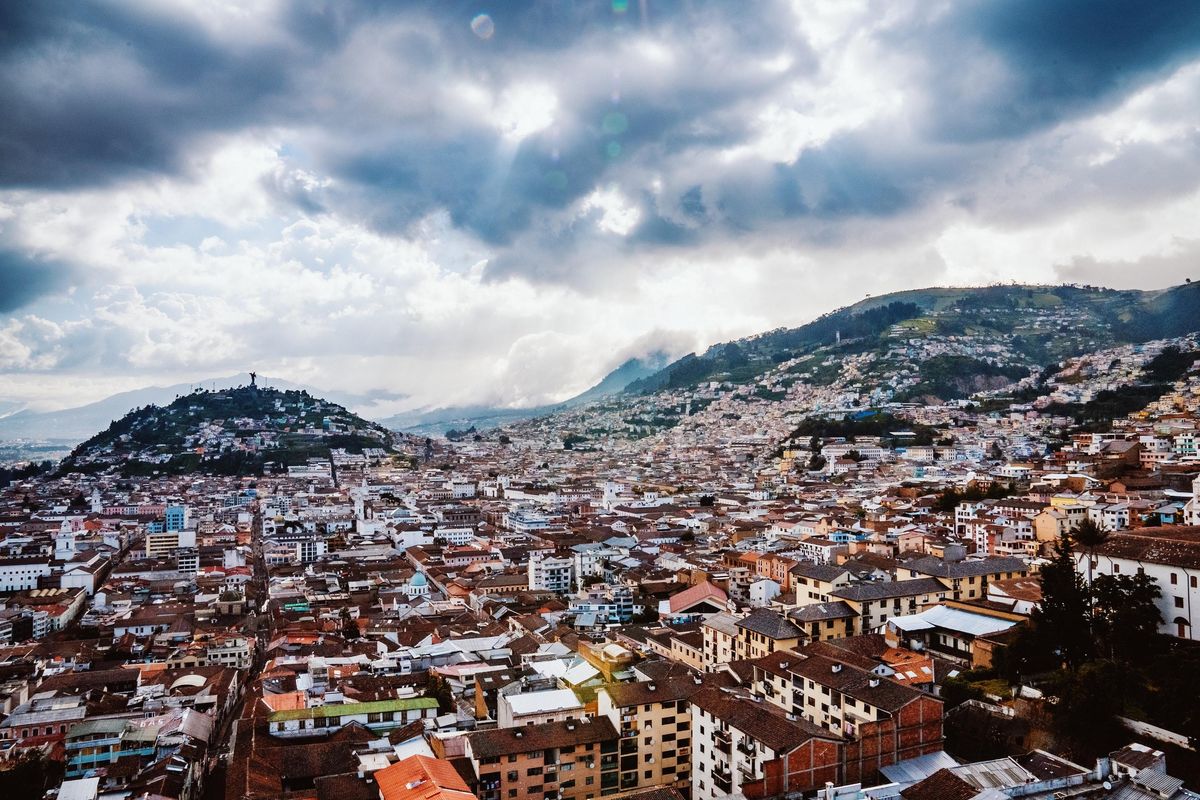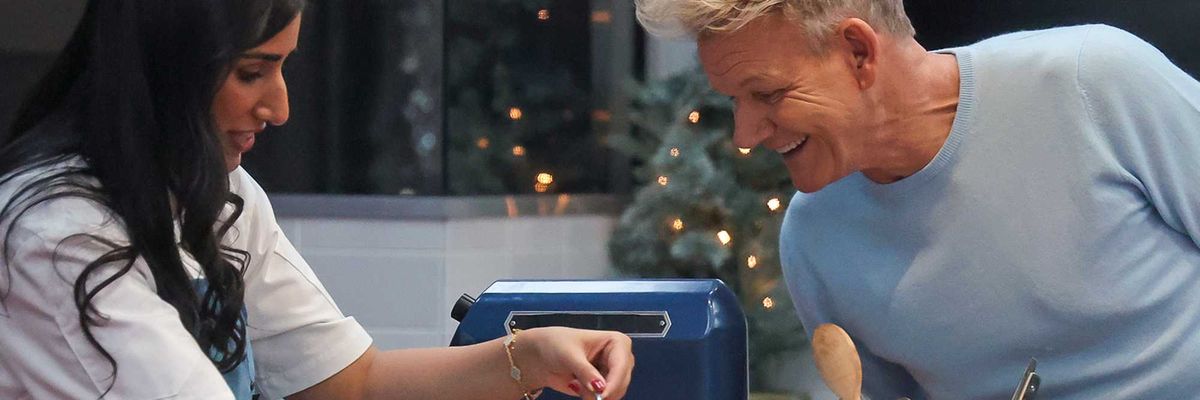Quito drapes like velvet across the volcanic slopes of Ecuador’s Inter-Andean Valley, cinched tight by the equator’s razor edge.
A collage of pastel architecture and grand cathedrals, the city’s center is so striking that UNESCO honored Quito as its first World Heritage site (along with Krakow, Poland) back in 1978. While it’s grown exponentially in the years since, filling the steep valley with a sprawling metropolis of close to three million people, the oldest capital in South America remains an alluring 16th century masterpiece.
Quito was conquered twice, first by the ancient Inca who turned the city into the northernmost capital of its colossal empire, then by Spanish conquistadors who transformed its sacred pathways in the name of Catholicism and lined them with soaring baroque churches. The oldest is Iglesia y Convento de San Francisco, a cathedral drenched in gold and relics and sacred artwork. The adjacent convent, now a museum of religious ecstasy, still serves beer in the brewery once run by its monks.
Somehow even more lavish is the nearby La Compañia, the Church of the Society of Jesus, where every inch of its altar, walls, and cupolas radiates with precious metals, carvings, and murals. It costs just three dollars to climb to its tiled roof and watch 500 years of history unfold all the way to El Panecillo, the prominent southern hill crowned by a 150-foot winged Virgin Mary. Below her outstretched wings the 16th-century San Diego Convent protects some of the city’s most unique art, including a painting of the Last Supper with a roasted guinea pig, a traditional Andean delicacy, on its table.
Museums abound in Quito; there are more than 40 of them sprinkled across the city, from its modern northern neighborhoods to the historic center. The collection ranges wildly from the expected (Museum of the City, Contemporary Art Center) to the niche (La Capilla del Hombre, Yaku Water Museum) to the esoteric (Numismatic Museum, Alberto Mena Caamaño Museum). For the most complete look at Ecuador’s pre-conquest, colonial Spanish, and contemporary eras, the National Museum of Ecuador displays an easily digestible, curated selection of exquisite art and artifacts.

Like in San Francisco (as in, California), Quito’s steep up-and-down topography assures a new, more stunning vista at every turn, from the top of the towers of the gothic Basilica del Voto Nacional to the cobblestone streets of the almost 500-year-old neighborhood of Guápulo. But there’s only one place to consume the entire city in one greedy glance: the summit of Pichincha Volcano on Quito’s western flank. The Teleferico cable car climbs almost vertically to its crest, where there are walking trails and a wooden swing that soars out over the precipice, 12,943 feet above sea level.
Also like in SF, one of the Ecuadorian capital’s biggest draws is food. Many traditional dishes revolve around potatoes and corn—llapingachos, fried mashed potato and cheese patties; mote (boiled corn) with chicharron; locro, potato and cheese stew; and empanadas of a dozen varieties including those made from green plantains and those stuffed with rice and vegetables. Canelazo, a warm, spiced-apple-cider-like elixir spiked with aguardiente is everything from welcome drink to late-night aperitif.
At more contemporary restaurants, some of the city’s best chefs are pioneering modern takes on classic cuisine. Among the best is chef Alejandra Espinoza, whose stint in SF’s pop up scene in the mid-2010s led her back to her hometown in 2018 to open Somos, where she interprets flavors from the Amazon to the coast in exciting and unexpected ways.
In the neighborhood of La Floresta, stylish global and Ecuadorian restaurants rub elbows with hip eateries like the cult-movie-theater-cum-cafe Ochoymedio, while a totally different, equally lively scene thrives after dark closer to the city center in La Ronda, the bohemian neighborhood behind the Santo Domingo Church. There, salsa and pop and reggaeton blast from doors and windows of small clubs and cafes flung wide to a joyous swarm of partygoers and strolling families.
But it's in the light of morning, when the clouds are most likely to reveal the regiment of white-peaked volcanoes on its eastern horizon, that Quito is most electrifying. It’s then that this city at the center of the Earth earns its nickname, the light of America.






















